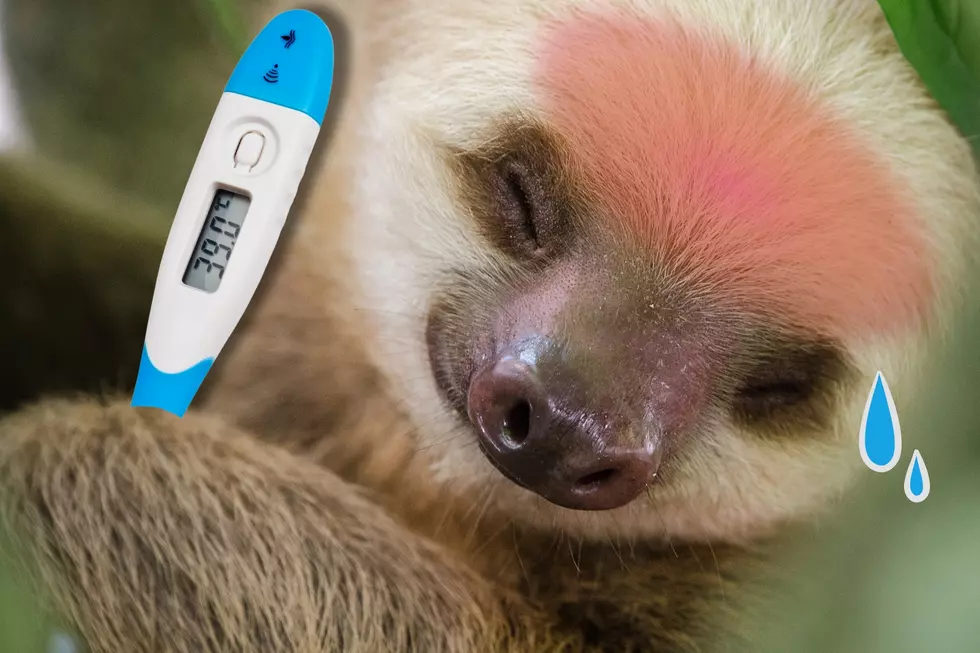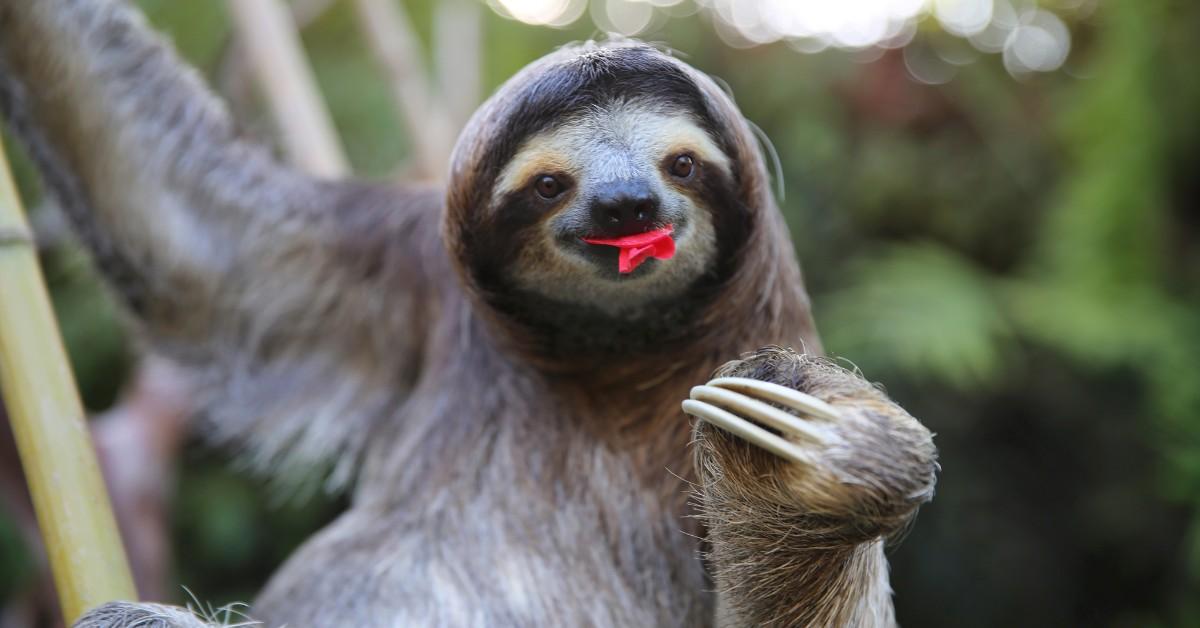Sloth Fever: Understanding The Growing Fascination With The World's Slowest Mammal
There’s something undeniably enchanting about sloths, the gentle creatures that have captured the hearts of people worldwide. The term "sloth fever" has emerged as a phenomenon describing the widespread fascination with these slow-moving mammals. From viral videos on social media to themed merchandise, sloths have become a cultural icon. But what exactly is behind this craze, and why are people so drawn to these unique animals?
Sloth fever is not just a fleeting trend; it represents a deeper connection between humans and nature. Sloths, with their laid-back lifestyle and quirky characteristics, offer a refreshing contrast to the fast-paced world we live in. This article will delve into the reasons behind this phenomenon and explore the various aspects that make sloths so captivating.
As we journey through the world of sloths, we’ll uncover fascinating facts, their ecological significance, and the importance of conservation efforts. By the end of this article, you’ll have a comprehensive understanding of why sloths are more than just cute animals—they’re a symbol of mindfulness and environmental awareness.
Read also:Olivia Rodrigo Outfits A Comprehensive Guide To Her Iconic Style
Table of Contents
- What is Sloth Fever?
- Biological Insights into Sloths
- Understanding Sloth Behavior
- The Importance of Sloth Conservation
- Sloths in Popular Culture
- Sloth Biodiversity and Species Overview
- The Role of Sloths in Ecosystems
- Common Myths About Sloths
- Current Research on Sloths
- Conclusion: Why Sloth Fever Matters
What is Sloth Fever?
Sloth fever refers to the widespread fascination and admiration for sloths, a trend that has gained momentum over the past decade. This phenomenon is not limited to wildlife enthusiasts but has permeated mainstream culture, with sloths appearing in movies, advertisements, and even as mascots for various brands. The term "sloth fever" encapsulates the emotional and psychological connection people have with these animals, often symbolizing relaxation, simplicity, and a slower pace of life.
The rise of social media platforms has played a significant role in spreading sloth fever. Viral videos of sloths engaging in their daily routines or interacting with humans have garnered millions of views, sparking interest and curiosity. This digital exposure has transformed sloths from obscure rainforest dwellers into global celebrities, making them one of the most beloved animals in the world.
Why Sloths Are So Adorable
Part of the appeal of sloths lies in their appearance. With their round faces, tiny eyes, and perpetual "smile," sloths exude a sense of innocence and charm. Their slow movements, often perceived as deliberate and thoughtful, add to their allure. This unique combination of traits makes sloths irresistible to many, contributing to the growing phenomenon of sloth fever.
Biological Insights into Sloths
To truly understand sloth fever, it’s essential to explore the biology of these fascinating creatures. Sloths belong to the order Pilosa, which also includes anteaters. They are primarily found in Central and South America, where they inhabit tropical rainforests. There are two main types of sloths: two-toed and three-toed, each with its own unique characteristics.
Key Features of Sloths
- Slow Metabolism: Sloths have one of the slowest metabolisms of any mammal, allowing them to conserve energy.
- Specialized Diet: Their diet consists mainly of leaves, buds, and fruits, which are low in nutrients but abundant in their natural habitat.
- Unique Adaptations: Sloths have long claws for gripping tree branches and a specialized digestive system to break down tough plant material.
These biological adaptations enable sloths to thrive in their environment, despite their slow pace of life. Understanding these features provides insight into why sloths have become such a symbol of resilience and adaptability.
Understanding Sloth Behavior
Sloth behavior is as intriguing as their physical characteristics. These animals spend most of their lives hanging upside down from tree branches, a behavior that has puzzled scientists for years. Sloths are primarily nocturnal, meaning they are most active during the night, although they can occasionally be seen moving during the day.
Read also:Robert Pattinson Shirtless A Comprehensive Look At The Iconic Moments
Why Sloths Move So Slowly
The slow movement of sloths is not a sign of laziness but rather a survival strategy. By moving slowly, sloths reduce their energy expenditure and avoid detection by predators. Their greenish fur, which is often covered in algae, provides excellent camouflage, making them nearly invisible in the dense rainforest canopy.
The Importance of Sloth Conservation
Despite their popularity, sloths face numerous threats in the wild. Habitat destruction, climate change, and illegal wildlife trade are among the primary challenges they encounter. Conservation efforts are crucial to ensure the survival of these remarkable animals and the ecosystems they inhabit.
Conservation Initiatives
- Protected Areas: Establishing national parks and reserves helps safeguard sloth habitats.
- Research Programs: Ongoing research provides valuable insights into sloth behavior and ecology, aiding conservation efforts.
- Public Awareness: Educating the public about the importance of sloths and their role in the ecosystem is vital for their protection.
By supporting these initiatives, individuals can contribute to the preservation of sloths and the biodiversity of their rainforest homes.
Sloths in Popular Culture
Sloths have made their mark in popular culture, appearing in movies, books, and even as mascots for various brands. Their image is often associated with relaxation and mindfulness, making them a perfect fit for campaigns promoting stress relief and mental well-being. The popularity of sloths in media has further fueled the phenomenon of sloth fever, reaching audiences across the globe.
Notable Sloth Characters
- Flash from "Zootopia": This character humorously portrays the slow nature of sloths, bringing laughter to audiences worldwide.
- Buddy the Sloth: A popular social media star, Buddy has millions of followers who enjoy his daily antics and adorable demeanor.
These examples demonstrate the cultural significance of sloths and their impact on modern society.
Sloth Biodiversity and Species Overview
Sloths are a diverse group of mammals, with six recognized species divided into two main categories: two-toed and three-toed sloths. Each species has its own unique characteristics and adaptations, contributing to the rich biodiversity of these animals.
Species Comparison
- Two-Toed Sloths: Larger in size and more adaptable to different environments.
- Three-Toed Sloths: Smaller and more specialized, with a more restricted diet.
Understanding the differences between these species is crucial for effective conservation strategies and research initiatives.
The Role of Sloths in Ecosystems
Sloths play a vital role in the ecosystems they inhabit. As herbivores, they help maintain the balance of plant populations in the rainforest. Additionally, their slow movements and unique adaptations contribute to the biodiversity of their environment, supporting a wide range of other species.
Ecosystem Services Provided by Sloths
- Pollination: Sloths contribute to the pollination of certain plant species through their interactions with flowers.
- Seed Dispersal: By consuming fruits and defecating in different locations, sloths aid in the dispersal of seeds, promoting plant growth.
These ecological contributions highlight the importance of sloths in maintaining healthy rainforest ecosystems.
Common Myths About Sloths
Despite their popularity, there are many misconceptions about sloths. Addressing these myths is essential for promoting accurate information and fostering a deeper appreciation for these animals.
Debunking Sloth Myths
- Myth: Sloths are lazy. Reality: Their slow movements are a deliberate survival strategy.
- Myth: Sloths are solitary creatures. Reality: Some species exhibit social behaviors and can form bonds with others.
By dispelling these myths, we can gain a more accurate understanding of sloths and their fascinating lives.
Current Research on Sloths
Scientific research on sloths continues to uncover new insights into their biology, behavior, and ecological significance. Advances in technology have enabled researchers to study sloths in greater detail, providing valuable data for conservation efforts and public education.
Recent Discoveries
- Genetic Studies: Research into sloth genetics is helping to identify distinct populations and inform conservation strategies.
- Behavioral Analysis: New techniques are shedding light on the social and cognitive abilities of sloths, challenging previous assumptions.
These discoveries underscore the importance of ongoing research in understanding and protecting sloths.
Conclusion: Why Sloth Fever Matters
Sloth fever is more than just a trend; it represents a growing appreciation for nature and the importance of biodiversity. By understanding the biology, behavior, and ecological significance of sloths, we can better appreciate their role in the world and the challenges they face. Conservation efforts and public awareness are crucial for ensuring the survival of these remarkable animals.
We invite you to join the movement by sharing this article, supporting conservation initiatives, and spreading the word about the importance of sloths. Together, we can make a difference and ensure that future generations have the opportunity to experience the magic of sloth fever.

:max_bytes(150000):strip_icc():focal(749x0:751x2)/sloths-10-7eaa7c26e16b4c958257e27eae549a94.jpg)
